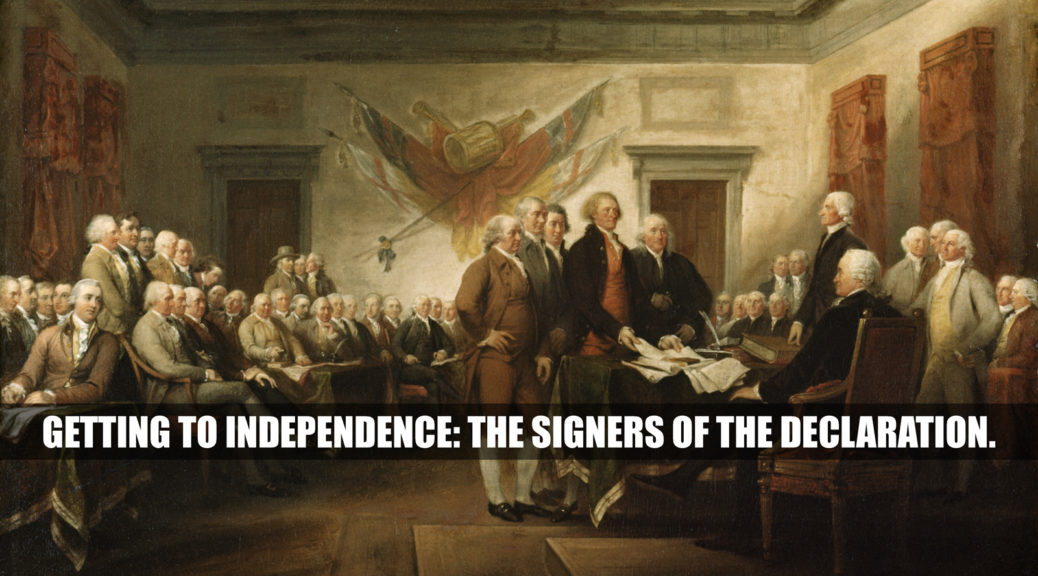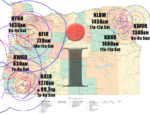
Annual 4th of July Show! Getting to the Declaration, It’s Signers
Podcast: Play in new window | Download
Subscribe: Apple Podcasts | Spotify | Amazon Music | TuneIn | RSS | More
Show Summary: The Declaration of Independence was the third, this-time-we-mean it appeal to the King. We look at the others and why they failed. We often talk about the Founding Fathers but we don’t often talk about the Founding Fathers. What led them to be there? Did you know some weren’t supposed to be there? Join us for this special look into the Signers’ lives, sacred honor, and fortunes—before and after they signed.

Six Different Times, on Eight Different Stations. Listen anywhere! All stations stream live!
Saturdays
8a – 9a: KYKN 1439AM (Salem/Keizer) | Direct Link to KYKN Live Stream
10a – 11a: KFIR 720AM (entire Willamette Valley) | Direct Link to KFIR Live Stream
11a – noon: KLBM 1450AM (Union County) | Direct Link to KLBM Live Stream
11a – noon: KBKR 1490AM (Baker County) | Direct Link to SuperTalk Live Stream
7p – 8p: KWRO 630AM (Oregon Coast & Southeastern Oregon) | Direct Link to KWRO Live Stream
Sundays
8a – 9a: KWVR 1340AM (Wallowa County) | Direct Link: KWVR Live Stream
7p – 8p: KAJO 1270AM or 99.7FM (Grants Pass/Medford) | Direct Link: KAJO Live Stream
Mondays
After the show airs on our network of radio stations, you can listen to our podcast either here on our site or your favorite podcast platform. We are now on Apple podcasts, Spotify, Stitcher, TuneIn, and more. See the full podcast list.
Original Air Dates: June 26 & 27 and July 3rd & 4th, 2021 | Greg Leo
This week: It’s our 11th Annual Fourth of July Show! In the past, our shows focused on celebrating the Fourth of July down through the years and what those celebrations looked like. In the then-frontier of the Midwest. On the Oregon Trail at Independence Rock. The big 50th Anniversary. And, among other things, we’ve looked at the Declaration of Independence itself. The key phrases and the history behind them.
Our guest every year for these annual shows is Greg Leo, a political and business consultant by day but his true love is American history. Especially our early history and the events of our founding.
This year, our special focus is on the previous appeals that led to the final, bold statement: The Declaration of Independence.
Leading up to the Declaration: The Olive Branch Petition
Did you know that the Declaration of Independence was not the first appeal to the King? There were two others that could be considered forerunners to the Declaration. We focus on the Olive Branch Petition.
And we take a look at the First Continental Congress and their two main accomplishments. Do you know whose idea a continental congress was in the first place?
The Second Continental Congress, the same one that sent the Declaration of Independence, sent the Olive Branch Petition to the King, in an attempt to avert war. By then, there had been shots fired and people killed at the battles of Lexington and Concord.
Thomas Jefferson did a first draft but Congress considered it too inflammatory. So they turned to John Dickinson, known as the “penman of the revolution” to soften the tone.
Tune in to hear why it didn’t work. Was it inadvertently sabotaged by one of the Declaration’s signers?
“United”? Not Quite
There were some 65 delegates to the 2nd Continental Congress. But a quick count shows only 56 signers. What happened there?
Well. While we often see the Founding Fathers as a united front, getting there wasn’t easy. And it definitely wasn’t always united. We talk to Greg Leo about the divisions and some delegates who had to be replaced to get to that united.
The Signers of the Declaration of Independence
This year we focus on some of the signers of the Declaration of Independence. We hear about them pledging their lives, their fortunes, their sacred honor. And they really meant it. All of them were truly putting everything on the line.
But what led them to be there?
And did you know that some of them weren’t even supposed to be there? One was a substitute for the serving President of the Second Continental Congress but played a key role in the Declaration itself.
With 56 signers, and only a one-hour show, we couldn’t focus on all of them. But we do focus on:
- John Hancock – you know him for his signature. Why so big? But how did this late arrival end up being the President of the Second Continental Congress? Did you know that in many ways he was the Donald Trump of the Revolution?
- John Morton – I know. Who? You’ve probably never heard of him but he was the key vote. He was also the first signer to die.
- Button Gwinnett — The second signer to die but not from what you might think. This signer embodied the idea of sacred honor.
- Samuel Adams — Most people think of him for beer. Except he wasn’t a brewer. What else don’t you know about him? He was
- John Adams — A creature of politics and a rival to many. Most famously to Thomas Jefferson over states’ rights vs. powerful federal government. Hear about his intercepted letter.
- Thomas Jefferson — The workhorse who wrote most of the Declaration. A complicated and conflicted man for sure but how’d he get to the 2nd Continental Congress in the first place?
- Charles Carroll – the very last of the signers of the Declaration of Independence to die. Imagine the changes he saw in the 56 years after the signing.
The I Spy Radio Show Podcast Version
Trapped under a heavy object? Missed the show? Don’t worry—catch the podcast version. I Spy Radio is now available on your favorite platform, or you can grab it right here. See the full list of podcast options.
Links and Info on the Signers of the Declaration
- Two terrific sources for more information about the signers:
- Learn about the Signers or their wives (via dsdi1776.com)
- Declaration Resources Project (via Harvard University)
- More on the signers of the Declaration of Independence from Archives.gov
- Decent overview of the signing of the United States’ Declaration of Independence (Wikipedia)
- The fates of the signers (perhaps more traditional than factual with not a lot of supporting evidence)
- List of American Revolution Battles (Thought Co)
- Americans defeat the British at Yorktown (History.com, This Day in History: Oct 19, 1781)
Some Signers We Just Couldn’t Get To
- Joseph Hewes – A successful Businessman who put it all on the line. He was a merchant and had quite a few ships and was the “go-to expert” in Congress for maritime issues. He placed his ships at the service of the Continental Armed Forces. And he served Congress as the Secretary of the Naval Affairs Committee until 1779, when he fell ill.
- Thomas Lynch Jr. – He was commissioned a company commander in the South Carolina regiment in 1775. … He fell ill shortly after signing the Declaration and retired from the Congress. At the close of 1776 he and his wife sailed for the West Indies. The ship disappeared and there is no record of his life after.
- Richard Stockton – He was captured and tortured: “New Jersey was overrun by the British in November of ’76, when he was returning from the mission. He managed to move his family to safety, but was captured and imprisoned by the British. Originally, he was taken to Perth Amboy where he was jailed. Stockton was then moved to Provost Prison in New York where he was intentionally starved and subjected to freezing cold weather. Died of lip cancer before the war was finished
- George Taylor – A bit of a quirky story. He actually arrived too late to vote for independence but signed the Declaration.
- John Witherspoon – One of two ministers to sign, though the other (Lyman Hall) was also a physician
One Reply to “Annual 4th of July Show! Getting to the Declaration, It’s Signers”